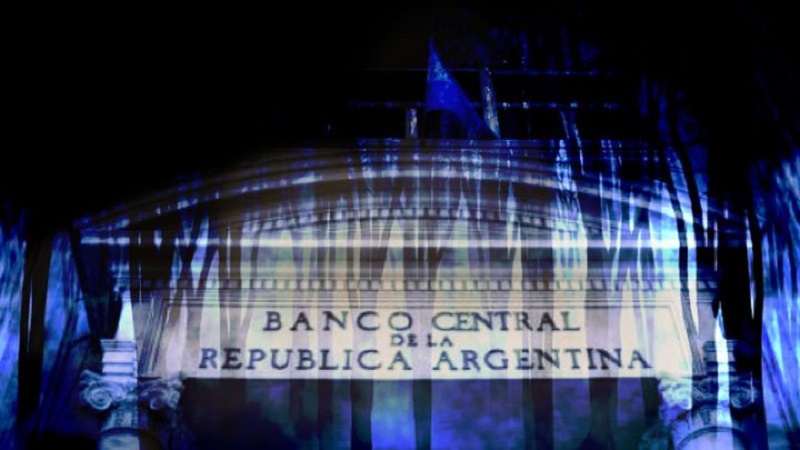
Less than a week before the change of government, the economic plan of Javier Milei, the far-right libertarian who will assume the presidency, remains a mystery. Between the statements and the setbacks, the composition of the economic team is not 100% confirmed either and had significant losses before taking office. Like that of Emilio Ocampo, defender of dollarization, an idea that for the moment remained on hold.
So much improvisation only increases uncertainty at all possible levels. The state of the national economy is critical, without dollars, it will have to face million-dollar maturities between December and February.
Prices don’t stop, the last week of November marked an increase of 3.1% according to the measurement carried out by Economía. On a year-on-year basis, inflation exceeds 140%. Last week the food heavyweights returned to the fray with a 40% remarking. The expectations of devaluation They are behind these maneuvers that increase the cost of living, strongly affecting working families. Added to this are the layoffs at the door due to the announcements of the suspension of public works and the cooling of activity, which could begin to configure a scenario with social conflict.
Despite all this, the “Leliqs” bomb has become a priority for Miliei. Is the accumulation of these Central Bank debts with the banks really a central problem of the economy? Many economists have agreed that no. “Why would it be a priority to disarm today a problem that has not yet exploded and does not have to explode?” they point out from the consulting firm Epyca. And they add “the BCRA has plenty of regulatory capacity to negotiate a gradual exit with the banks: as gradual as it serves the Government, but giving enough liquidity to the banking system to avoid inconveniences. This would prevent the problem from becoming urgent.”
A business tailored to banks
Las leliqs are Liquidity Letters issued by the Central Bank, paid debt that is delivered to commercial banks in exchange for pesos and matures every 28 days. The objective of this monetary tool is to regulate the circulation of money, in particular, to absorb the surplus of pesos. There are at least three key relationships to understand how leliqs operate:

-Fixed deadlines. Given the inflationary context, those who have some savings capacity are looking for options to protect the value of their pesos. Given the exchange rate that limits access to dollars, fixed terms with high rates continue to be an attractive variant. The TNA (annual nominal rate) is 133%. What is the relationship with the leliqs? Banks deliver savers’ (sight) and fixed-term deposits to the BCRA in exchange for interest. With that return they finance the payment of fixed installments every 30 days. There is a direct relationship between leliq and fixed term. Some call it a mirror relationship.
One of the main characteristics of banks is to keep a profit margin for the interest they charge when lending money. However, in the country personal credit lines are low, mortgage credit lines are almost non-existent, and only loans to SMEs have increased during the year. Currently it is observed that more than 50% of banks’ assets go to leliqs and passes. The latest BCRA Bank Report confirms that In the last twelve months, private banks obtained profits of one trillion pesos.
As we explained at the beginning, the leliqs – which were born in 2018 by Federico Sturzenegger – seek to control the money in circulation and prevent them from going to the dollar, thereby increasing the pressure on prices. Both the leliqs (28 days) and the passes (1 day) are remunerated liabilities of the Central Bank. This short-term debt in the hands of commercial banks or “quasi-fiscal deficit” amounts to $23 trillion pesos, tripling the monetary base.
New debt?
In recent weeks, leliq renewals have decreased significantly. These preventive movements by the banks imply a transfer of leliqs to passive repos. They dismantled placements at 28 days to keep them at 1 day, that is, available in the face of deregulatory measures that may be announced from 10D onwards. The composition of Leliqs in the Central’s remunerated liabilities dropped to 50% in a few days.
In statements to Ambito.com from GMA Capital Research analyzed: “Milei’s emphasis on solving the problem of remunerated liabilities caused the renewal of Leliqs (BCRA bills) to reach minimum levels and banks to reduce the maturity of their assets with the Central Bank. The economic team led by Luis Caputo must now deactivate the pass ‘bomb’ (short placements).”
Milei chose Luis “Toto” Caputo to disarm this “bomb” of paid liabilities. Former director of the BCRA and Minister of Finance under Macri, Caputo is the creator of the 100 year bond. A few days ago Milei, Caputo and Francos traveled to the United States in search of new dollars. Are old recipes that don’t work, they only facilitate big deals for speculators. To put a stop to speculation and the great flight, it is necessary to propose fundamental measures such as the need for nationalization of the banking system, with the expropriation of private banks, which become a single bank managed by workers, but not to appropriate the savings of the popular sectors, but to preserve them. A bank that guarantees access to cheap credit for housing, to promote micro-businesses or for small merchants hit by the crisis. That is, it would allow banking to serve social needs instead of speculation and looting.
It is clear that Milei’s adjustment is not for everyone, while it distributes business between economic and financial power; The chainsaw targets the workers and popular sectors. There is silver, the ten largest banks earned more than $3 billion per day. To confront these attacks, it is necessary to begin organizing resistance to the Milei cuts at the service of the IMF and the employers’ associations.
Source: www.laizquierdadiario.com

